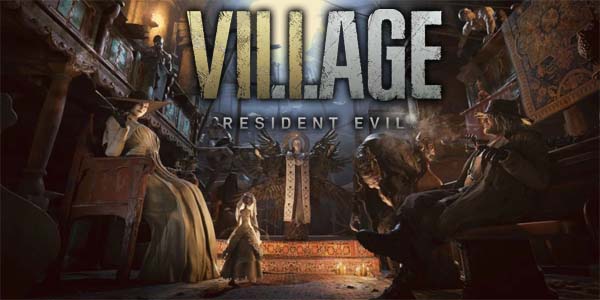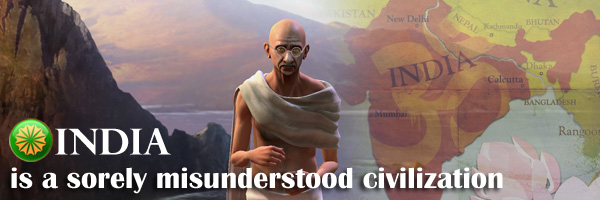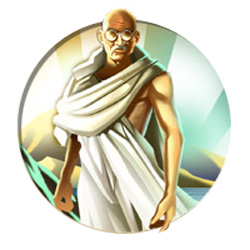
Village seems to be positioning itself as a sort of "greatest hits" of earlier Resident Evil games. I'm not sure it all comes together as well as Capcom must have hoped it would. Resident Evil VII Biohazard did an excellent job of modernizing the design philosophies of the original Resident Evil game. Map design, inventory and resource constraints, and the "fight or flight" nature of enemy encounters all perfectly re-captured the feel of the original PS1 classics, without all of the clunkiness.
Village maintains the exploratory map design of the original Resident Evil and of Resident Evil VII, but it also tries to port concepts and aesthetics from the Resident Evil 2 remake and from Resident Evil 4. The RE2 stuff fits well enough, but the RE4 influences just don't feel compatible with classic design philosophy.
The setting instantly reminded me of Resident Evil 4.
Clash of philosophies
Right off the bat, the general aesthetic screams "Resident Evil 4". The game begins in a small, rustic, eastern European village at the foot of a gothic castle. Just like in RE4, you're quickly ambushed by the monstrous villagers and have to desperately fight your way out. Resident Evil 4 replaced the traditional zombies of the series with semi-aware "ganados"; Village similarly breaks away from the traditional zombies, but this time, the monsters are werewolves.
Not long into the game, you'll start smashing crates to reveal hidden loot, and pixel-hunting along the walls and ceilings for obnoxious sparkling gems to shoot down and collect. Also just like in Resident Evil 4, you'll routinely get rewards of items and money from defeated enemies. That money and loot is used to buy items or upgrade your equipment at a shop, just like in Resident Evil 4. This is where the game started to break down for me.
Loot, ammo, and cash can be recovered from smashed crates or defeated enemies.
Giving the player rewards of in-game cash for defeating foes (and for wasting bullets to shoot glowing gems off of walls) completely changes the motivations of the player in how we deal with enemies. I'm no longer carefully considering whether to try to sneak past an enemy or run away, nor am I ever firing off a single round at an enemy's knee to stun or cripple it so I can get away without consuming more resources, the way I might in REmake2. Since every defeated foe returns some of the resources that I invest into killing it, there is no "fight or flight"; only "fight". The enemies stop being threatening or frightening, especially on the standard difficulty setting, in which ammunition is readily available and the monsters patiently await their turns to charge and attack.
Even inventory management is mostly thoughtless. The more linear, more action-oriented, and less puzzle-oriented design of the game means that key items and treasures are not put in your limited inventory, and there isn't even a storage box to keep excess weapons or supplies. Only weapons, ammo, and healing items go into your briefcase. Everything else has unlimited storage. Even crafting components have separate, unlimited storage (the only exception being the animals meats needed for the Duke to cook meals -- more on this later). [More]
b05b0e00-39c0-4ac3-9d47-9089537c0f54|1|5.0
Tags:Resident Evil, Resident Evil VIII Village, Capcom, horror, survival horror, action, shooter, Resident Evil 4, gothic horror, vampire, werewolf, Ethan Winters, Lady Dimitrescu, castle
Back in the summer, my girlfriend and her brother saw that Norwegian Air was offering direct flights from Las Vegas to Copenhagen, Denmark for relatively cheap (under $400 round-trip). So we bought some tickets, made reservations at a hostel in Copenhagen, and spent our Thanksgiving holiday traveling to Europe and getting some more stamps on our passports. This was only my second trip to Europe and the second set of stamps that I got on my passport.
The flight was pretty grueling. Ten hours in economy seating is not the most comfortable thing in the world. The time-zone difference also meant that the flight effectively wiped an entire day off of our calendar. Ah well. We bought a transit card called the "Copenhagen Card", which gave us free use of the public transit systems for the entire week. It also granted us free admission to some public facilities such as castles, museums, and parks. It was a very handy thing to have!

Gløgg is a Scandinavian holiday wine.
Apparently, the Danes really like Christmas. One of the things that struck us almost as soon as we got off the plane is that the entire city was decorated for Christmas. Whole buildings were covered in lights, street lights were lined with garlands, and there were multiple Yule Markets (outdoor gift and food stands) lining the streets and squares of the city. Since the Danes don't have Thanksgiving, they apparently don't have any reservations about putting up Christmas decorations in November. We walked through some of these street vendors and Yule Markets and tried our first Danish delicacy: gløgg. Gløgg is a Swedish and Danish drink that mixes hot mulled wine with cinnamon, ginger, cardamom, raisins, and almonds. It's kind of like a sweet hot tea, and it's a very strong drink with a somewhat overwhelming fragrance. It was good in moderation, but its overwhelming sweetness meant that it wore out its welcome for us very quickly... [More]
5a6382b0-bb40-46ce-8620-3080bbc87496|0|.0
Tags:Copenhagen, Roskilde, Denmark, Malmo, Sweden, Europe, vacation, passport, Norwegian Air, Generator Hostel, hostel, public transit, Thanksgiving, November, Christmas, holiday, glogg, Paper Island, Viking, longship, museum, National Museum of Denmark, Viking Ship Museum, Rosenborg, Kronborg, Malmohus, castle, renaissance, Tivoli Garden, Elsinor, Hamlet, William Shakespeare

Continuing my series of strategies for Brave New World, I am going to take a moment to discuss one of (if not the) most sorely misunderstood civilizations from the vanilla game: Gandhi's India. India received a very minor tweak in Brave New World (its unique building was modified to provide tourism instead of gold), but the new trade route mechanics radically change the way that India should be played. In some ways, the new features make India feel like a completely new civilization!
The ancient civilization of India is one of the world's most populace and diverse countries. More than 1/6th of the world's population currently calls India home (that's over a billion people!), it is one of the cultural and spiritual centers of the world. India is the birthplace of both the Hindu and Buddhist religions, which make up third and fourth most populous religions today. The less-populous faith of Jainism also has roots in India. In addition to the variety of religions, there are also over 100 distinct languages that are spoken in India! Indian society used to follow a rigid caste system in which a person's status in life is determined at birth. Although this caste system is not enforced (and is actively discouraged by the government), it remains a persistent force in the nation, and still leads to a great deal of prejudice and conflict within the country.

One of the most significant leaders of Indian history (and world history) is Mohandas Gandhi. In the early 1900's, India was under British occupation, and Gandhi, the son of the Prime Minister of the small state of Porbandar, was successful in leading an unprecedented non-violent rebellion to drive the foreign rule out. This peaceful rebellion lead to Gandhi being recognized as one of the most courageous and moral leaders the world has ever known. Indians affectionately refer to him as "Bapu" (translation: "father") in recognition of his role in creating the modern Indian nation. His birthday, October 2, is a national holiday in India, and is celebrated outside of India as the International Day of Non-Violence. Sadly, he was assassinated in 1948 (at age 78) by a Hindu nationalist who believed that Gandhi showed too much favoritism to Pakistan, one of India's bitter rivals. The assassin was tried and executed the following year, and Gandhi's ashes were distributed around the country for numerous memorial services.
Gandhi's representation in Civilization V gets a lot of undeserved criticism from some players, who often cite India as the "worst civ in the game" based solely on the fact that he is the only civ with a penalty explicitly stated in his unique ability (except for Venice in Brave New World), and that his unique unit is in some ways inferior to the unit it replaces. However, it is important to note right off the bat that there are plenty of civs who receive indirect penalties as part of their uniques. But the "Population Growth" ability, itself, is very poorly understood. Many players assume that this means that India must be played with a small empire, and that India cannot compete for any victory except for culture or diplomatic. This is simply not the case, and I'm going to explain why! [More]
53e37110-4392-460c-901d-be3ce7603441|9|4.9
Tags:Sid Meier's Civilization, Civilization V: Brave New World, Civilization V, Gandhi, India, Population Growth, War Elephant, Mughal Fort, tourism, trade route, chariot archer, castle, happiness, unhappiness, cities, PolyCast, atomic bomb, nuclear missile, nukes, ranged mounted unit, Civ-V
|

| 12 | | | | | | | 60 | | 11 | | | | | | | 55 | | 10 | | | | | | | 50 | | 09 | | | | | | | 45 | | 08 | | | | | | | 40 | | 07 | | | | | | | 35 | | 06 | | | | | | | 30 | | 05 | | | | | | | 25 | | 04 | | | | | | | 20 | | 03 | | | | | | | 15 | | 02 | | | | | | | 10 | | 01 | | | | | | | 05 |
|